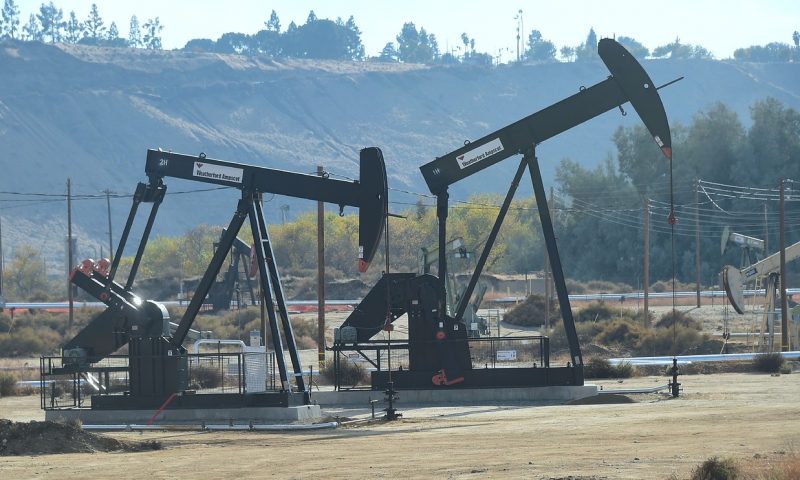Big production cuts, bets for higher demand lift hopes for market balance
Oil futures rose sharply Thursday, lifting U.S. prices to their highest in nearly six weeks, on the back of recent pledges by major oil producers to cut output, as the International Energy Agency pointed to a tightening of the supply picture later in the year.
The move for prices comes a day after U.S. government data showed a surprise weekly fall in domestic crude supplies, the first in 16 weeks, as well as declines in total crude production.
Global oil prices have been buoyed in recent days by Saudi Arabia’s pledge to cut its oil production by an additional one million barrels per day, starting in June, on top of cuts outlined in the deal between Organization of the Petroleum Exporting Countries and its allies that kicked in on May 1, said Cailin Birch, global economist at The Economist Intelligence Unit.
The “unprecedented pledges” by Saudi Arabia and its OPEC+ partners should “help to shore up investor optimism for a slight improvement in the market balance in June and July,” she said in emailed commentary.
“However, serious downside risks remain. Economies around the world are beginning to gradually lift the Covid-19 restrictions in May, and it remains unclear what the outcome of this will be,” Birch said. “If this opening turns out to be premature, and a second wave of coronavirus cases emerge, we would expect lockdown measures to return and oil prices to sink again.”
West Texas Intermediate crude for June delivery CL.1, 0.83% rose $2.27, or 9%, to settle at $27.56 a barrel on the New York Mercantile Exchange. That was the highest front-month contract finish since April 3, according to Dow Jones Market Data. July Brent crude BRN.1, 1.48%, the global benchmark, added $1.94, or nearly 6.7%, at $31.13 a barrel on ICE Futures Europe.
In a monthly report, the IEA on Thursday said the COVID-19 lockdowns will continue to sharply curtail crude demand in May, while producers implement the largest monthly production cut on record.
The IEA said world demand for crude will drop by 21.5 million barrels a day this month, while crude-producing nations and companies slash output by a “spectacular” 12 million barrels a day. A gradual pickup in demand as lockdowns ease and sharp reductions in output mean the outlook for crude has “improved somewhat” since April, the agency said.
For 2020, the IEA now looks for global crude demand to fall by 8.6 million barrels a day versus its April forecast for a fall of 9.3 million barrels a day.
Crude-oil prices ended lower Wednesday, with downbeat remarks on the economic outlook from Federal Reserve Chairman Jerome Powell blamed for damping demand expectations. At the same time, data from the Energy Information Administration showed the first drop in U.S. crude inventories since mid-January, including a decline in supplies at Cushing, Oklahoma, the delivery hub for Nymex futures.
Dwindling storage capacity in Cushing was blamed in large part for driving the expiring May WTI contract into negative territory for the first time in history last month. The COVID-19 pandemic has destroyed demand for crude, contributing to a global glut.
The EIA report had also revealed a bigger-than-expected weekly decrease in U.S. gasoline stockpiles and a smaller-than-expected rise in distillate supplies.
On Nymex Thursday, June gasoline RBM20, 1.92% rose nearly 7.3% to 91.45 cents a gallon, while June heating oil HOM20, 1.43% added 7.6% to 89.48 cents a gallon.
Eugen Weinberg, commodity analyst at Commerzbank, noted signs the market for crude is tightening in China. Leading export countries such as Saudi Arabia and Iraq cut shipment volumes and raised prices. Higher prices are also being charged now for forward shipments from Brazil, Russia, Oman and Africa.
Back in the U.S., implied crude production on a 4-week moving average has fallen to around 11.8 million barrels a day, down more than 2 million barrels a day from its peak in mid-March, noted analysts at JBC Energy, a Vienna-based consulting firm. “The very latest data point even put it at below 11 million barrels a day and is of course a key element behind the first inventory draw and the associated rally in crude markets.”
Elsewhere in the energy market Thursday, prices for natural gas ended higher after the EIA reported that domestic supplies of natural gas rose by 103 billion cubic feet for the week ended May 8. That compared with an estimated increase of 101 billion cubic feet from S&P Global Platts Analytics.
June natural gas NGM20, 0.65% rose 6.5 cents, or 4%, to $1.681 per million British thermal units.

